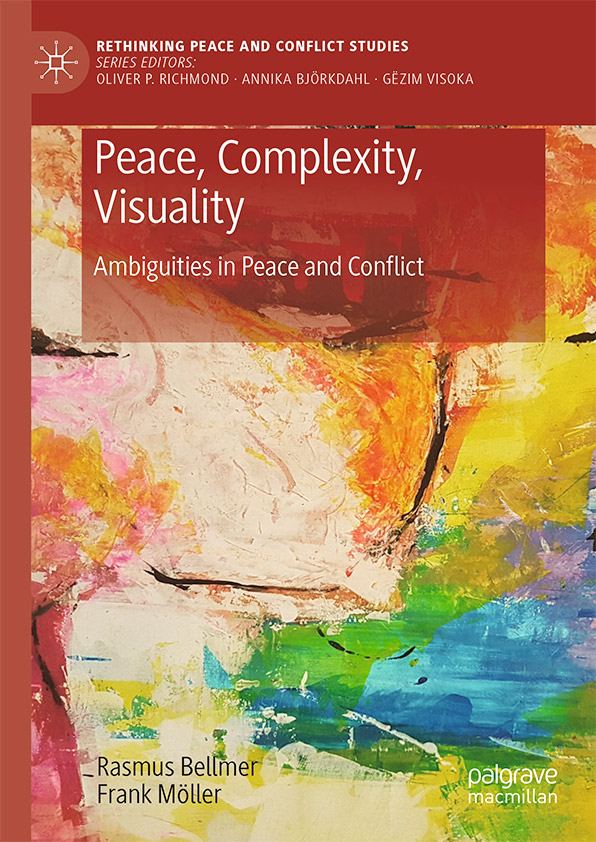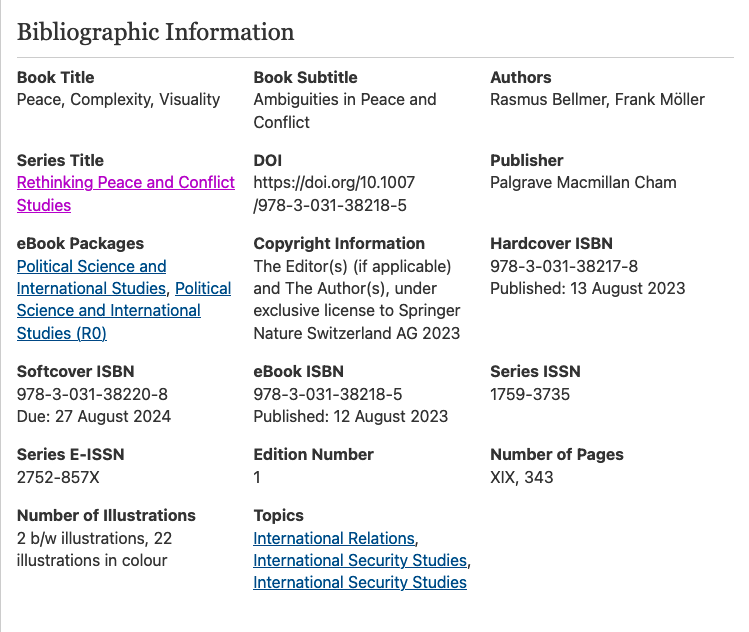We are happy to say that Palgrave Macmillan has published our new book Peace, Complexity, Visuality: Ambiguities in Peace and Conflict.

In the book, we explore the tolerance of ambiguity-enhancing potentialities inherent in visual images – both theoretically-conceptually in light of complexity theory and by discussing an interactive visual project on post-war conditions in Bosnia and Herzegovina published in 1996 by the New York Times on the Web, Bosnia: Uncertain Paths to Peace.
We position the book firmly within the narrative tradition in peacebuilding, focusing on active listening and active looking as mediation tools with which to complexify conflict narratives and to counteract narrative closure.
This is important because, as Roger Mac Ginty has recently noted, “[c]onflict can be so totalizing, group membership so all-encompassing, and narratives so closed, that anyone who is outwith the script can often be ignored.”
Ignorance is worse than criticism; it removes an argument from discourse rather than merely giving it an inferior ontological status (which can, in principle, be altered through discursive reconstruction).
As we write in the book’s preface in light of the ongoing war against Ukraine: “Once again, politics and the media are dominated by images of confrontation, polarization, armed aggression, material destruction and human suffering – all the sorry ingredients of modern warfare. War sidelines peace, war images sideline peace images.”
One ingredient of warfare is narrative closure; another element is the unwillingness to even contemplate alternative ways of seeing things: “Once the dynamics of the war machine start in the military, in politics and in the media, peace and its advocates find it difficult to get heard. The current militarization of international affairs affects not only foreign and security policy but also our whole society and our way of doing and thinking about basically anything” – including peace.
In the book, we do not subscribe to a militarist logic but we admit that currently, “peaceful alternatives are neither particularly obvious nor particularly popular among those arguing for militarized security. We acknowledge that peace research right now finds it difficult to present a convincing answer to the recurrence of power politics”.
Furthermore, while our argument in the book favours tolerance of ambiguity (rather than disambiguation) and the recognition of, rather than reduction in, complexity, we also acknowledge the limits of tolerance, suggesting that socio-political frames need to be established within which tolerance of ambiguity prevails while outside of these frames it does not. Our argument, thus, does not only employ complexity theory; it is also in itself rather complex. How could it be otherwise, given the vicissitudes of peace, conflict and war?
In accordance with the basic lines of thought inspiring our work on images and peace, in the book we suggest acknowledging and capitalizing on the plurality of meanings that all images necessarily carry with them and, by so doing, learning to cope with ambiguities beyond visuality as well. Thus, we treat images’ non-coherence as a merit and exemplify our argument by discussing Fred Ritchin and Gilles Peress’s 1996 online project Bosnia: Uncertain Paths to Peace, an important precursor to current interactive multimedia projects.
The book includes original photographs taken in Sarajevo over the last couple of years and presented in the book in such a manner that readers can construct their own narratives, thus contributing to the visual-discursive construction of the city.

